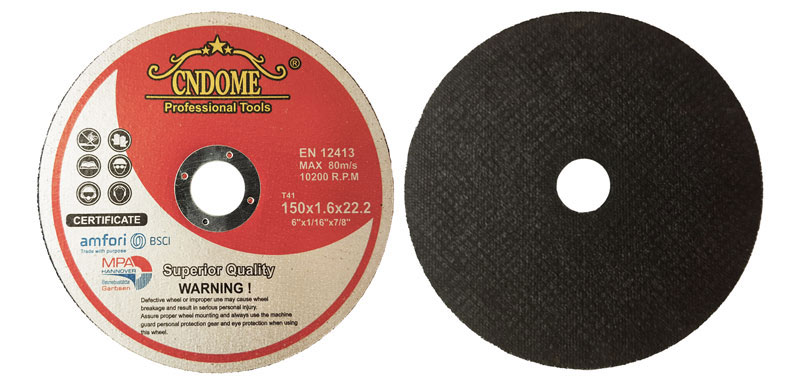When you use a cutting disc to slice through metal, stone, or concrete, you probably don’t think much about how it was made. Yet, behind every perfectly crafted cutting disc lies a highly specialized process, carefully engineered to ensure safety, durability, and high-performance. Today, we take a closer look at what happens inside a cutting disc factory and why the production process matters.
1. The Design and Materials: The Foundation of a Quality Cutting Disc
The journey to a high-quality cutting disc begins with the selection of materials. Cutting discs are typically made from a combination of abrasives, such as aluminum oxide, silicon carbide, or zirconia alumina, bonded together with resins or other bonding agents. The exact composition of the disc depends on the material it’s intended to cut, ensuring maximum cutting efficiency and a long service life.
Factories often use proprietary formulations for their cutting discs, especially when it comes to customized products for specific industries. For instance, a cutting disc meant for stainless steel will have a different abrasive makeup compared to one designed for cutting masonry.
2. Manufacturing Process: From Raw Material to Finished Product
Once the materials have been selected, the manufacturing process begins. The general steps involved include:
- Mixing: The raw materials are mixed together to form a uniform blend of abrasive particles, bonding agents, and other additives.
- Molding: The mixture is pressed into a mold, shaping the cutting disc to the desired size and thickness. During this step, the discs are also designed with specific features like reinforced fiberglass or metal cores for added strength and stability.
- Curing: After molding, the discs undergo a curing process in which they are heated at a specific temperature to harden the bonding agent, binding the abrasive particles securely to the disc.
- Grinding and Shaping: After curing, the discs are then ground and polished to achieve a smooth, consistent finish. This step ensures that each disc is shaped perfectly and ready for use.
- Inspection: Rigorous quality control checks are performed to inspect the discs for any imperfections. These include visual inspection, tests for hardness, and checks for the disc’s balance and uniformity.
3. Customizations: Tailored Solutions for Specific Needs
Cutting disc factories often offer OEM (Original Equipment Manufacturer) and custom solutions for customers. Customization can involve adjusting the size, abrasive composition, bonding agent, or even adding special features like cooling holes to help reduce heat buildup during use.
For industries that require specific disc performance (e.g., cutting through stainless steel, cast iron, or ceramic), cutting disc factories work closely with customers to ensure the final product meets their exact needs. Some manufacturers even offer bespoke labeling or packaging services.
4. Quality Control: Safety and Performance Standards
Quality control is a critical part of the cutting disc manufacturing process. Discs that fail to meet safety and performance standards can result in accidents, inefficient cuts, and early wear. Most factories follow strict safety regulations and industry standards, such as ISO and EN standards, to ensure the discs are safe and effective.
Cutting disc testing typically includes:
- Dynamic Testing: Discs are subjected to rotational speed tests to ensure they can withstand high-speed cutting without breaking or deteriorating.
- Tensile Strength and Abrasive Testing: To measure how long the disc can cut effectively without losing its abrasive properties.
- Impact Testing: To ensure the disc can handle sudden impacts during cutting.
A cutting disc factory is a place where science, technology, and craftsmanship converge to create a product that meets the exacting demands of the industry.
5. Eco-Friendly Practices: Sustainability in Cutting Disc Production
Many cutting disc manufacturers are now incorporating sustainability into their production processes. This includes using recycled materials for packaging, reducing energy consumption during production, and exploring eco-friendly alternatives to traditional bonding agents. As the demand for sustainable products grows, cutting disc factories are becoming more mindful of their environmental footprint.
6. Conclusion: The Precision Behind Every Cut
Every cutting disc that leaves the factory is a testament to careful engineering, quality control, and precision manufacturing. Whether you’re using a disc for everyday tasks or highly specialized applications, knowing how these tools are made can provide valuable insight into their performance and reliability. From raw materials to finished products, cutting disc factories continue to innovate, ensuring that each disc is designed to perform reliably and safely for users across the globe.



